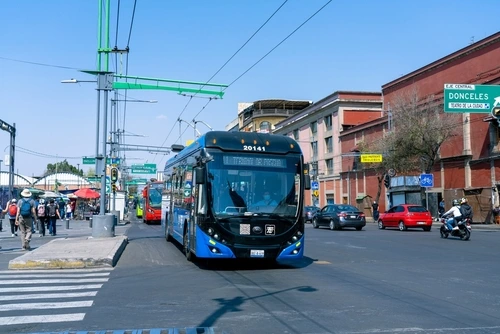
Earlier this week, a fleet of 50 articulated buses was incorporated into Mexico City’s transport authority, Metrobús. The authority manages a bus rapid transit (BRT) service that covers more than 280 stations and seven lines.

The buses will be integrated into Line 3, which first opened in 2011. The new e-buses will make Mexico City the proud owner of Latin America’s largest fleet of e-buses, with a target to electrify the entire line by 2035.
Metrobús sought technical assistance from the Zero-Emission Bus Rapid Deployment Accelerator (ZEBRA), “a partnership led by C40 Cities and the International Council on Clean Transport (ICCT), with support from the World Resources Institute (WRI) and the Global Green Growth Institute (GGGI)”.
What is bus rapid transit (BRT)?
BRT is a modern public transportation system used in many cities around the world. It combines the speed and convenience of rail transit with the flexibility of buses, providing a fast, reliable, and cost-effective way to move people. BRT systems typically feature dedicated bus lanes, high-frequency service, and modern stations that provide a “rail-like” experience.
BRT systems are designed to be cost-effective and efficient, making them an attractive alternative to traditional rail transit. By utilising dedicated lanes, BRT can avoid traffic congestion and provide faster travel times than conventional buses. The high-frequency service allows for more frequent stops, providing greater convenience for riders.
Additionally, BRT systems often feature modern stations with amenities like ticket vending machines and real-time information displays to provide the coveted rail-like experience. BRT systems are also more environmentally friendly than traditional buses. They typically use more fuel-efficient buses, emit fewer pollutants and new initiatives are more likely to be electrified.
BRT systems typically use less energy than rail systems, making them more sustainable transportation. Despite the benefits of BRT, there are some potential drawbacks. BRT systems require a significant investment in infrastructure, which can be costly.
The dedicated lanes can be difficult to implement in cities with limited space. Finally, BRT systems can be subject to the same traffic congestion as traditional buses, which can reduce their effectiveness.
[Read more: What Cleveland’s property growth tells us about the value of rapid-transit lines]






